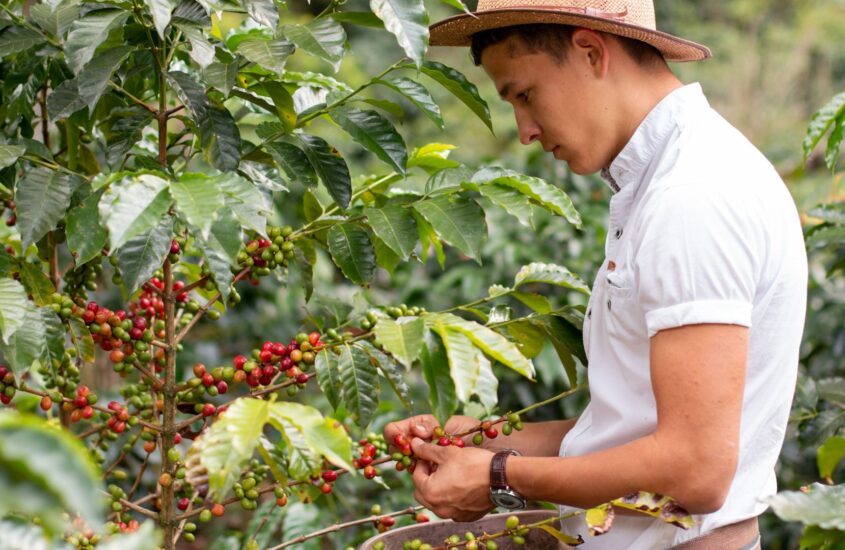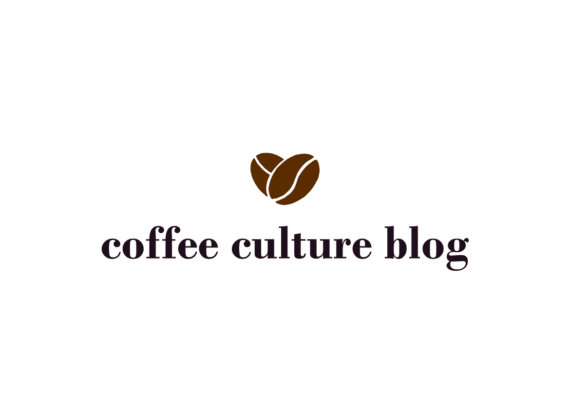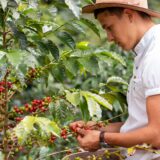The Origins of Organic Coffee: Sustainable Farming Around the World

Table of Contents
Origins of Organic Coffee: Sustainable Farming Around the World
3. The Global Origins of Organic Coffee
4. Sustainable Farming Practices
5. Environmental and Social Impacts
Introduction
Organic coffee has seen a surge in popularity. But what makes it so special?
It’s more than just a label. Organic coffee supports sustainable farming, promotes healthier ecosystems, and offers better conditions for farmers.
Have you ever wondered where your organic coffee comes from? Or why it costs more than regular coffee?
This guide will explore the origins of organic coffee, the farming methods behind it, and its impact on the planet.
What is Organic Coffee?
Organic coffee is grown without synthetic fertilizers, pesticides, or genetically modified organisms (GMOs).
Farmers rely on natural methods like composting, crop rotation, and organic soil amendments. These techniques preserve biodiversity and reduce chemical runoff.
To carry the “organic” label, coffee must meet strict certification standards. For example:
- USDA Organic Certification: Ensures no synthetic inputs are used in farming.
- Fairtrade Certification: Focuses on ethical practices, such as fair wages for farmers.
Have you noticed organic coffee often comes with a higher price tag? That’s because organic farming is more labor-intensive. Farmers must meet rigorous standards to maintain certification.
If you’re curious about the contrast, check out how non-organic coffee is grown.
The Global Origins of Organic Coffee
Organic coffee is grown in some of the world’s most biodiverse regions. Let’s explore a few major players:
Latin America
- Colombia: Known for its rich volcanic soil and ideal climate. Many small-scale farmers have transitioned to organic methods.
- Peru: A leading exporter of organic coffee. The country is celebrated for its clean, mild flavor profiles.
Africa
- Ethiopia: The birthplace of coffee. Ethiopian farmers rely on traditional, chemical-free farming techniques.
- Uganda: Emerging as a key player in natural coffee production, with a focus on robusta varieties.
Asia
- Indonesia: Organic coffee thrives in regions like Sumatra, where shade-growing techniques are common.
- Vietnam: Though better known for conventional coffee, some farmers are shifting to organic practices to meet global demand.
Each region offers unique flavor profiles shaped by its environment. Organic coffee from Ethiopia may have floral, fruity notes, while Sumatran coffee tends to be earthy and full-bodied.
Sustainable Farming Practices
What makes organic farming different from conventional methods?
Shade-Grown Coffee
Organic coffee is often shade-grown, meaning coffee plants are cultivated under a canopy of trees. This practice:
- Promotes biodiversity by creating habitats for birds and insects.
- Protects soil from erosion.
Composting and Natural Fertilizers
Instead of chemical fertilizers, farmers use compost, manure, and plant waste. These enrich the soil without polluting nearby water sources.
Hand-Picking and Selective Harvesting
Organic coffee is usually hand-picked. This ensures only ripe cherries are harvested, leading to higher-quality beans.
By using these methods, organic farming helps maintain a balance between production and preservation.
Environmental and Social Impacts
Why does organic coffee matter for the planet—and for people?
Environmental Benefits
- Healthier Soil: Organic practices improve soil fertility, allowing it to retain more nutrients.
- Reduced Pollution: Without synthetic pesticides, there’s less risk of contaminating rivers and streams.
- Lower Carbon Footprint: Many organic farms use renewable energy and sustainable transport.
Social Benefits
Organic coffee farming also supports communities. Fair trade certifications ensure farmers earn fair wages and work in safe conditions.
For example, smallholder farmers in Peru often join cooperatives to share resources and expertise. This not only improves their livelihoods but also strengthens local economies.
Challenges in Organic Coffee Farming
While the benefits are clear, organic coffee farming isn’t without its hurdles.
Cost of Certification
Obtaining organic certification can be expensive, especially for small-scale farmers. It involves inspections, paperwork, and ongoing fees.
Lower Yields
Organic farms typically produce fewer beans than conventional ones. Without chemical fertilizers, plants may grow more slowly.
Market Competition
Farmers must compete with large-scale producers who often have more resources. Despite the growing demand for organic coffee, conventional coffee still dominates the market.v
FAQ On Organic Coffee
What makes coffee organic?
Organic coffee is grown without synthetic chemicals, relying on natural farming methods like composting and crop rotation.
Is organic coffee healthier than conventional coffee?
Yes. Organic coffee is free from chemical residues, making it a cleaner option for consumers.
Which countries produce the most organic coffee?
Peru, Ethiopia, and Colombia are among the top producers of organic coffee.
Are organic coffee certifications worth it?
Absolutely. Certifications ensure ethical practices and environmentally friendly farming.
How can I identify genuine organic coffee?
Look for certifications like USDA Organic or Fairtrade on the packaging. These labels guarantee the coffee meets strict standards.
Conclusion
Organic coffee isn’t just a trend—it’s a movement toward sustainability.
By choosing organic, you’re supporting ethical farming practices, protecting ecosystems, and enjoying a cleaner, more flavorful cup of coffee.
Ready to make the switch? Explore brands that prioritize organic and fairtrade principles.
If you’re curious about other impacts of coffee, check out how coffee affects your silhouette or dive deeper into everything you need to know about organic coffee.
More from me
My biggest life changes, latest minds, and my family life.








